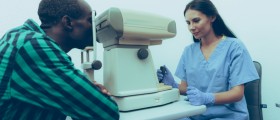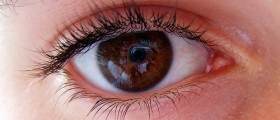
Retina is part of the human eye, which contains cells sensitive to the light. These cells are located on the back half of each of human eye and they translate anything we see in front of us into electrical impulses. Once these impulses are transmitted to our brain, they get interpreted and only then we can see.
What Is Retinopathy
Retinopathy is medical term which describes diseases of retina. This part of the eye contains many blood vessels and any abnormality of these structures may lead to different type of retinopathy. Retinopathy may be sudden event or develop slowly over some period of time. It can provoke partial or complete loss of vision, which could be transient or permanent problem. Sometimes, retinopathy resolves without any intervention while in some cases, this is something that has caused permanent negative effects on the eye.
As mentioned, there are several different forms of retinopathy and all of these might be caused by different factors. In most cases, some medical condition is identified as the reason for retinopathy, but central serous retinopathy, for instance, has no known cause. Doctors differentiate: retinopathy of prematurity, diabetic, hypertensive and central serous retinopathies.
About Hypertensive Retinopathy
Hypertensive retinopathy is consequence of high blood pressure and thickening of the small arteries. Routine eye exam may show the patient he or she is suffering from this type of retinopathy, although the person has no symptoms whatsoever. Some patients may complain about blurred vision, due to hypertension. High blood pressure may be responsible for abnormalities in structure of blood vessels, leading to their blockage and bleeding. Early stages of the disease may not affect the vision, but sudden and serious increase of blood pressure could lead to papilledema (swelling of the optic nerve) and vision problems.
Other Types of Retinopathy
Retinopathy of prematurity is commonly seen in premature or low birth weight babies. Development of the blood vessels in retina takes some time and in prematurely born babies this doesn’t finish. This problem may cause subtle changes of vision, but also blindness if not treated in time.
Diabetic retinopathy is characteristic for diabetics. These patients may have impaired fine vision and be unable to read or do some detailed work. Retinal detachment and sudden bleeding are further complications of this problem, especially in people with uncontrolled or poorly controlled diabetes.
Central serous retinopathy has no identified cause and usually affects men between 20 and 50 years of age. This condition can result in blurred or poor night vision. Certain factors have been suspected to trigger this condition, especially drugs such as antibiotics, antihistamines, steroid drugs, but also pregnancy, nasal allergies, emotional stress, asthma and some autoimmune disorders.

















Your thoughts on this
Loading...